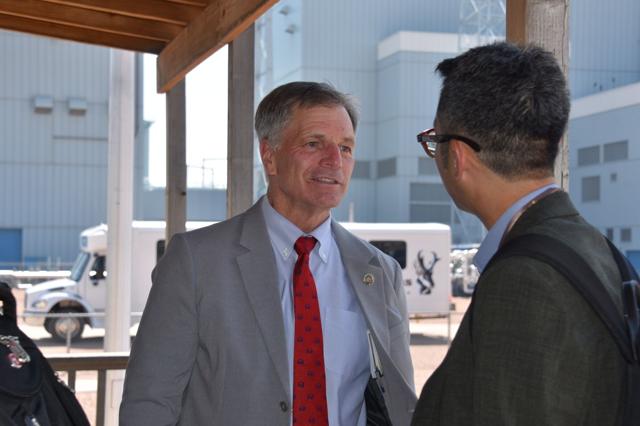Bigfoot99 and Your Wyoming Link contributed to this report.
Wyoming is writing new checks for old rock. Gov. Mark Gordon and the Wyoming Energy Authority said Monday that three coal-related projects will tap the state’s Energy Matching Funds, a pot of money lawmakers set up to lure big, transformative energy ideas to the Cowboy State. The headline grabber is a front-end engineering and design study that could pave the way for something the US hasn’t seen in years: an expansion of a coal-fired power plant.
Gordon called the potential add-on at Basin Electric’s Dry Fork Station outside Gillette “especially significant,” noting it would mark the first serious bid in decades to add a new coal unit to an existing plant.
“It represents the first potential expansion of a coal-fired power station in our nation in many years,” he said, framing the moment as both a nod to Wyoming’s energy heritage and a test of its appetite for innovation. “This is clear proof that coal is not dead and a reminder that Wyoming’s strength has always come from our ability to innovate without abandoning our values. Wyoming continues to show that innovation and stewardship can go hand in hand, and that reliable, affordable, baseload power remains essential to America’s energy future.”
The Dry Fork work gets a big push: $4 million for Basin Electric’s Unit 2 FEED study to scope the technical and economic case for another generator at the site. Around that anchor, the state is also seeding the broader coal ecosystem. Contango Resources secured $343,005 for a Big Horn Pipeline feasibility study aimed at unlocking future transport options, while the University of Wyoming’s School of Energy Resources won approval for $5.5 million to upgrade the Wyoming Integrated Test Center next door to Dry Fork — the living lab where utilities and tech firms trial carbon capture and other emissions-cutting tech at full flue-gas scale.
All of it flows from the Legislature’s Energy Matching Funds program, which was designed to pair public dollars with private capital and federal grants so projects can move from press release to pouring concrete. The governor’s office cast the trio as proof of concept: a legacy fuel, updated with engineering rigor and a place to test next-gen kit, backed by infrastructure that could move molecules or manage carbon if the economics pencil out.
Wyoming has been here before — betting that if you give engineers a sandbox and some seed money, they’ll find ways to wring more reliability and less pollution out of the state’s bread-and-butter resources. What’s different now is the scope. A second unit at Dry Fork would be a national statement as much as a state project, challenging the idea that the coal era is purely a rear-view-mirror story. Whether that bet pays off will come down to the FEED results, the permitting gauntlet and, ultimately, whether the grid still prizes the kind of always-on power coal has long delivered. For now, Wyoming’s message is simple: bring your best ideas — the state is ready to match them.










The latest news in your social feeds
Subscribe to our social media platforms to stay tuned